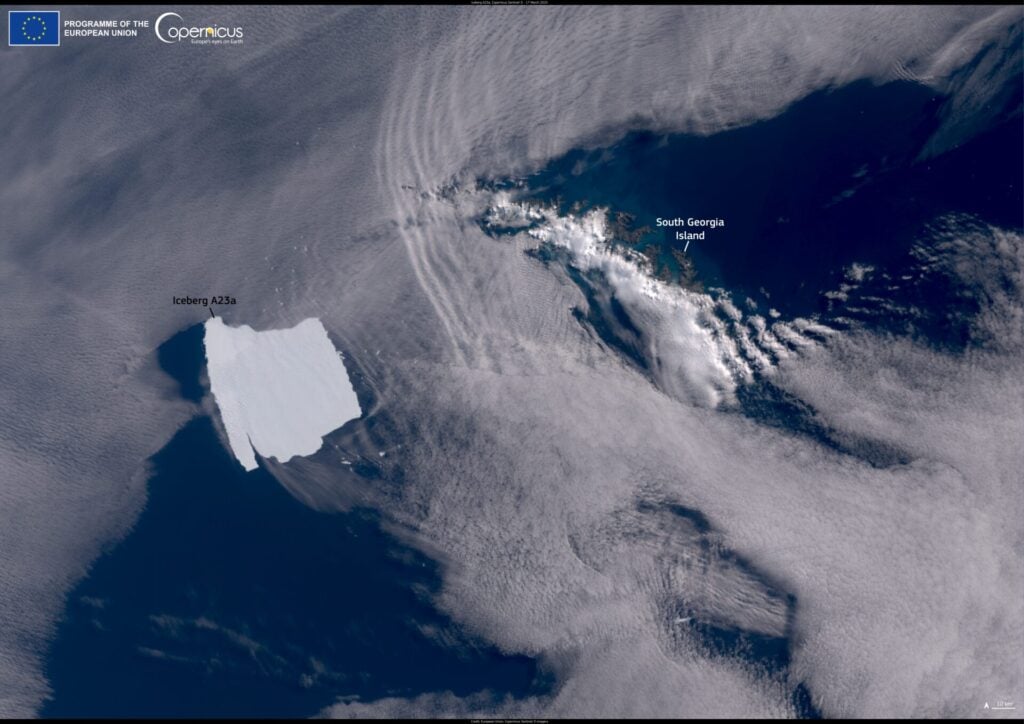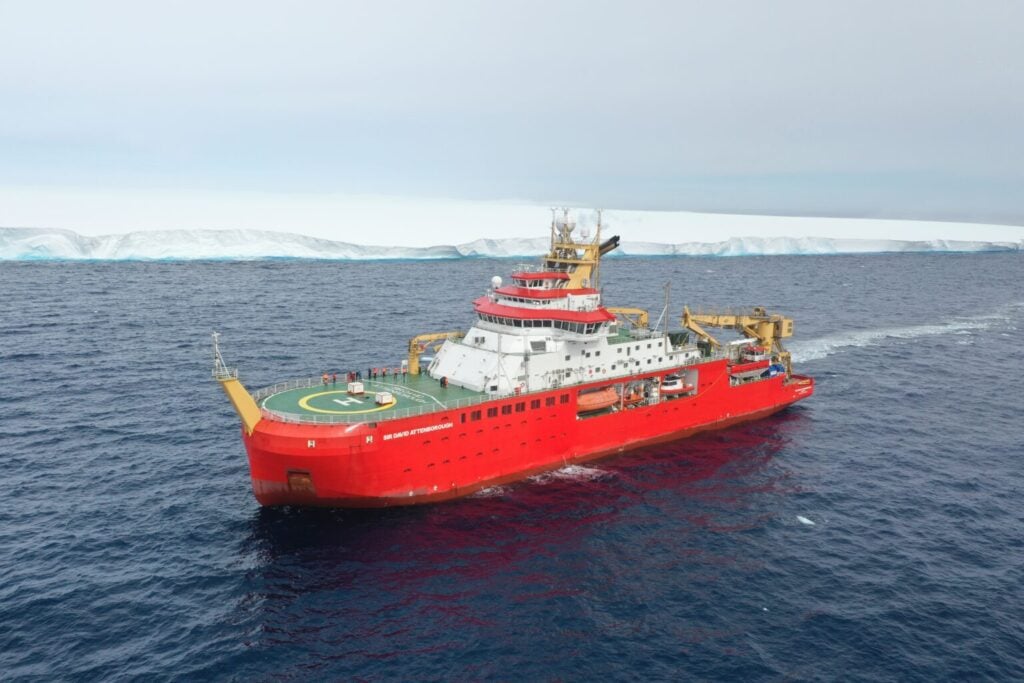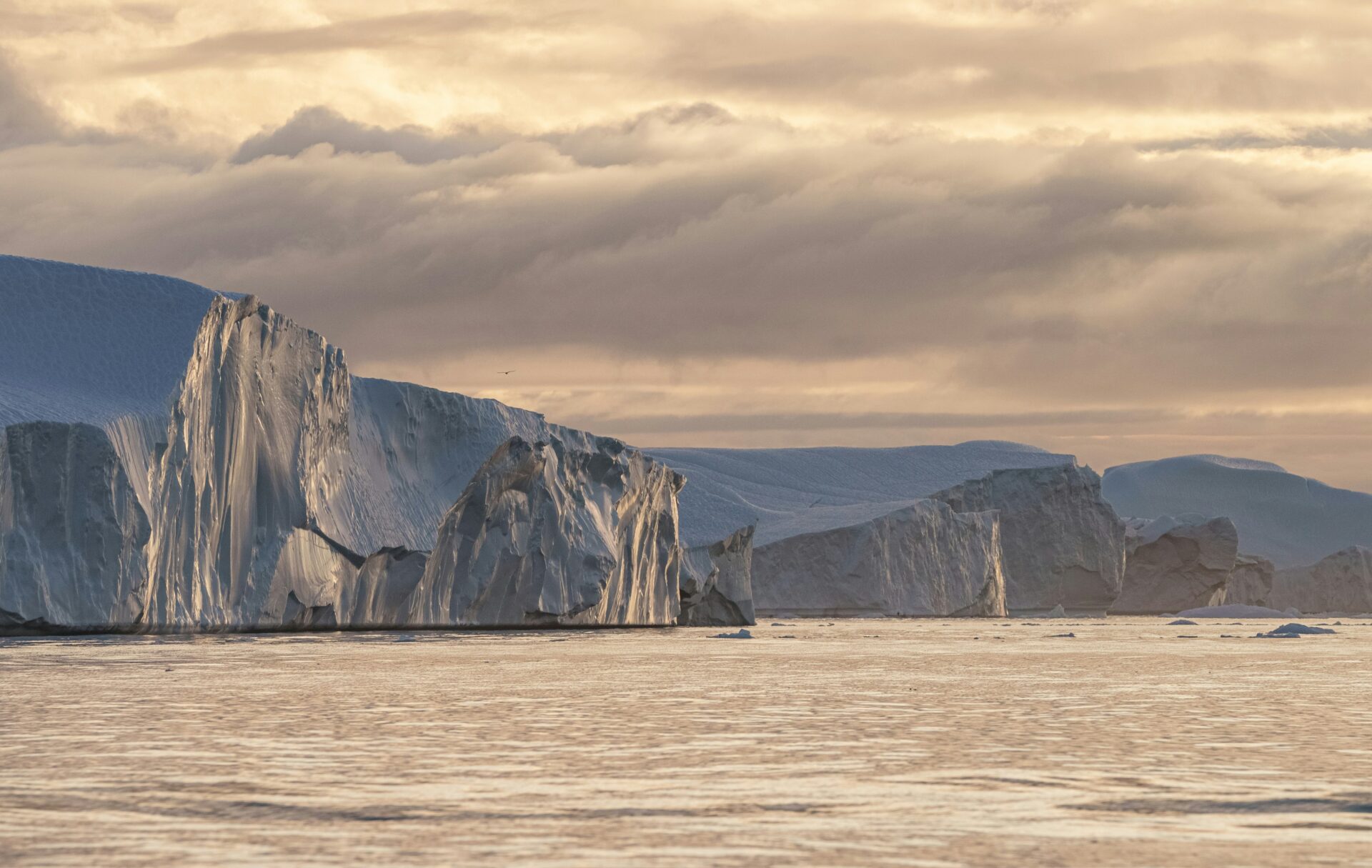Nearly 40 years after breaking off from Antarctica, a massive iceberg known as A23a and among the oldest and largest ever recorded, could disappear within weeks.
Earlier this year, as it floated through the South Atlantic Ocean, the ‘megaberg’ known as A23a weighed a little under a trillion tonnes and measured almost half the size of the entire emirate of Dubai.
The mass of frozen freshwater was so large it even briefly threatened penguin and seal feeding grounds on the remote island of South Georgia by running aground and devastating habitats.

However, it is now less than half its original size, at 1,770 sq km and 60km at its widest point, according to analysis of satellite images by the EU Earth observation monitor Copernicus.
In recent weeks, enormous chunks – about 400 sq km in size – of A23a have broken off while smaller chips, many still large enough to threaten ships, are floating alongside the main berg.
It was ‘breaking up fairly dramatically’ as it drifted farther north, Andrew Meijers, a physical oceanographer from the British Antarctic Survey said.
He explained: ‘I’d say it’s very much on its way out, it’s basically rotting underneath. The water is way too warm for it to maintain. It’s constantly melting. I expect that to continue in the coming weeks, and expect it won’t be really identifiable within a few weeks.’
A23a’s Long Voyage
A23a calved from the Antarctic shelf in 1986 but quickly grounded in the Weddell Sea, remaining stuck on the ocean floor for over 30 years.
It broke loose in 2020 and was carried along ‘iceberg alley’ into the South Atlantic Ocean by powerful circular currents before tides pushed it north.
In March, the iceberg ran aground in the shallow waters off South Georgia, but it dislodged in late May, and moved on.

Swinging around the island and tracking north, in recent weeks it has picked up speed, sometimes travelling up to 20km in a single day. Exposed to increasingly warmer waters, and buffeted by huge waves, A23a has rapidly disintegrated.
Scientists were surprised how long the iceberg had kept together, said Meijers.
He said: ‘Most icebergs don’t make it this far. This one’s really big so it has lasted longer and gone further than others.’
But ultimately, icebergs are ‘doomed’ once they leave the freezing protection of Antarctica, he added.

A23a’s drift across the ocean shows what happens as water temperatures rise, say scientists.
Research shows that as climate change accelerates, Antarctica’s ice sheets are becoming increasingly unstable, with more icebergs expected to calve off the main sheet as and disrupt marine ecosystems.
The World Wildlife Fund noted that greenhouse gas emissions from human activity, including plane flights, industrial manufacturing, mining and more have already melted 95 per cent of the oldest, thickest ice in the northern Arctic. Some scientists even predict that it could be ice-free in the summer as soon as 2040 if temperatures continue to drastically rise.
Professor Nerilie Abram, of the Australian National University has been studying the impact of global warming on the southern polar region.
His report stated: ‘The potential for abrupt changes is far less understood in the Antarctic compared with the Arctic, but evidence is emerging for rapid, interacting and sometimes self-perpetuating changes in the Antarctic environment’
Abram added: ‘Rapid change has already been detected across Antarctica’s ice, oceans and ecosystems, and this is set to worsen with every fraction of a degree of global warming.’









